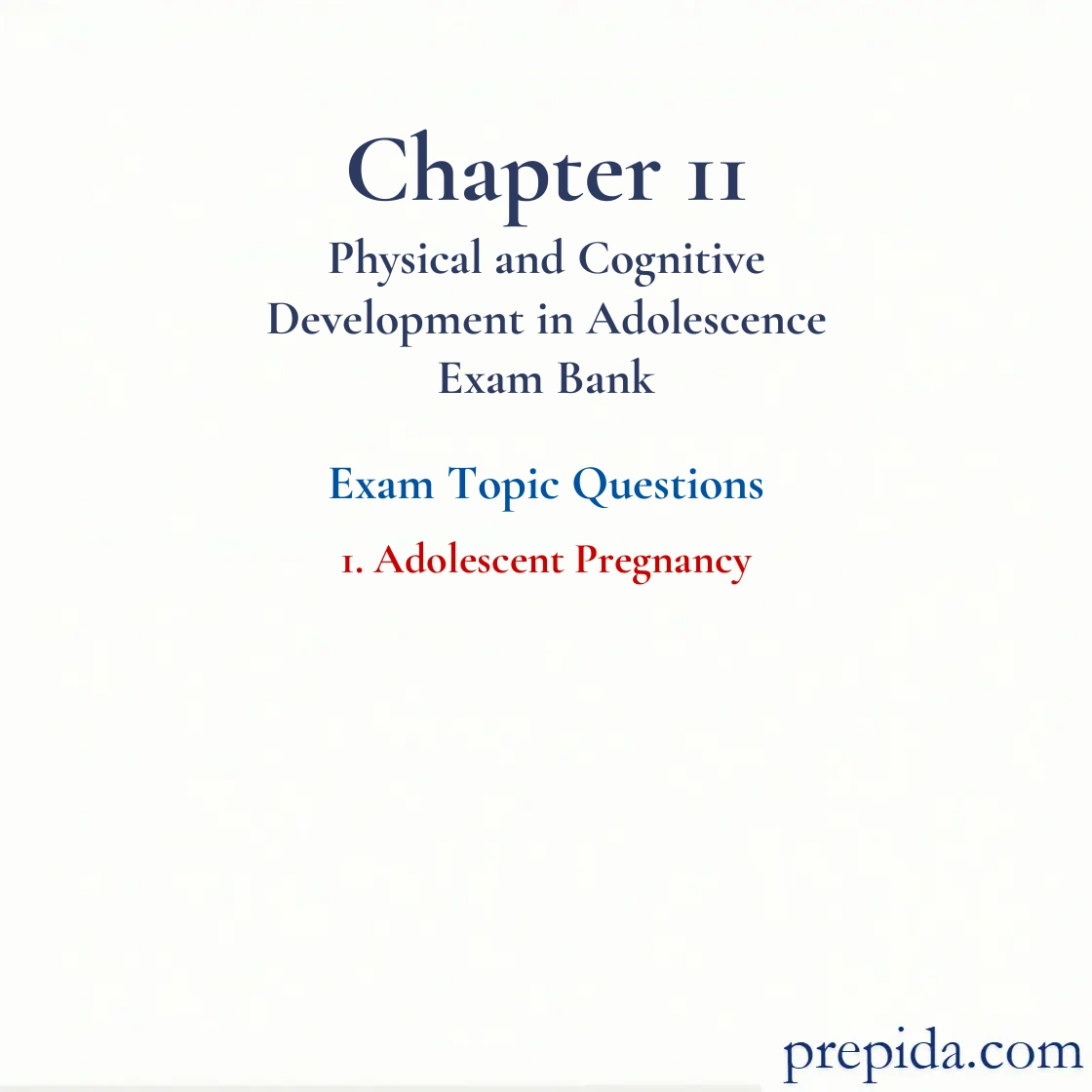
About This Chapter
This practice bank addresses containing test items covering areas like the adolescent pregnancy. Compiles a series of supplies test questions featuring verified responses, detailed explanations, and concept glossaries organized by difficulty levels with complete answers, explanations, and glossary definitions. Every question offers accurate answers, explanatory notes, definitional resources, and difficulty ratings for a comprehensive review.
The learning objectives include:
✓ Describe the physical changes that occur during adolescence.
Question 1
One strategy for reducing adolescent pregnancy is the ________ program that focuses on engaging adolescents in volunteer community service and stimulates discussions that help adolescents appreciate the lessons they learn through volunteerism.
- Health Bridge
- Teen Outreach
- Girls, Inc.
- Will Power/Won't Power
Correct Answer:
Teen Outreach
Glossary:
Adolescent Egocentrism: The heightened self-consciousness of adolescents.
Question 2
A cross-cultural comparison of 21 countries done by Sedgh and others (2015) showed that ________ had the lowest adolescent pregnancy rate among 15- to 19-year-olds.
- the United States
- Switzerland
- Japan
- the United Kingdom
Correct Answer:
Switzerland
Question 3
Daughters of teenage mothers are
- unlikely to become pregnant during adolescence.
- likely to be highly intelligent.
- more likely to use contraceptives.
- at increased risk for teenage childbearing.
Correct Answer:
at increased risk for teenage childbearing.
Question 4
Research has shown that infants born to adolescent mothers are more likely to have
- high birth weight.
- Down syndrome.
- childhood illnesses.
- type II diabetes.
Correct Answer:
childhood illnesses.
Question 5
In the context of reducing adolescent pregnancy, several recent research reviews (Denford & others, 2017; Jaramillo & others, 2017; Santelli & others, 2017) have concluded that abstinence-only programs
- are more likely to reduce the risk of adolescent pregnancy than sex education.
- are unable to delay the initiation of sexual intercourse.
- reduce human immunodeficiency virus (HIV) behaviors.
- result in an increase in the incidence of sexual intercourse.
Correct Answer:
are unable to delay the initiation of sexual intercourse.
Glossary:
Sexually Transmitted Infections (STIs): Infections that are contracted primarily through sexual contact, including oral-genital and anal-genital contact.
Question 6
A number of leading experts on adolescent sexuality conclude that abstinence-only programs
- are less effective at reducing the risk of adolescent pregnancy than sex-education programs.
- prevent adolescent pregnancies better than sex-education programs emphasizing contraceptive knowledge.
- are more effective at reducing the risk of sexually transmitted infections than sex-education programs.
- provide useful knowledge about safe sex to sexually active adolescents.
Correct Answer:
are less effective at reducing the risk of adolescent pregnancy than sex-education programs.
Question 7
Which of the following is most likely to be true of adolescent mothers?
- They interact more effectively with infants than do adult mothers.
- Their daughters are at a decreased risk for teenage childbearing.
- They were not good students before they became pregnant.
- Latina and African American adolescent girls who have a child are less likely to have a second child than are non-Latina White adolescent girls.
Correct Answer:
They were not good students before they became pregnant.
Glossary:
Adolescent Egocentrism: The heightened self-consciousness of adolescents.